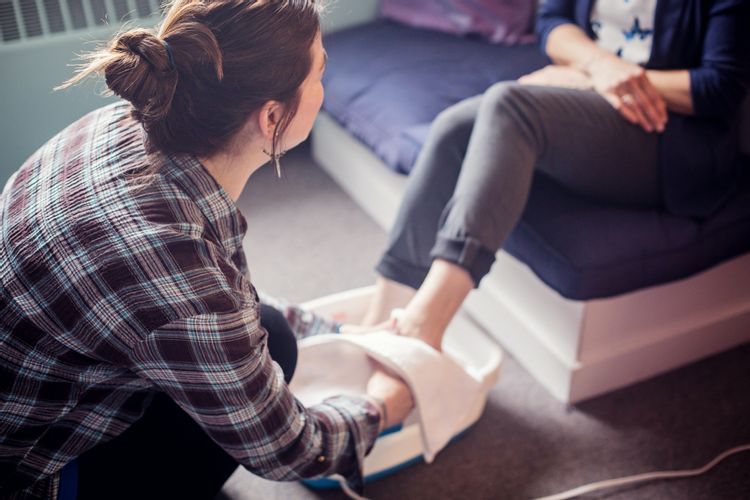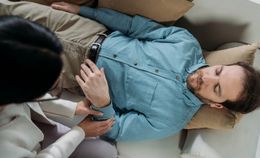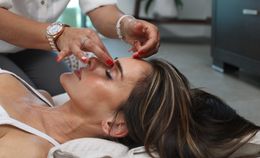Reflexology is a process that may be new to many, but the procedure is not exactly a recent innovation. So, what is reflexology, and how does it work?
What is Reflexology?
Reflexology, also called zone therapy, is an alternative medicine that involves a bodywork technique that uses pressure points applied to the feet and hands to stimulate organs and systems in the body of an individual.
Reflexology has been shown to treat a wide range of ailments by manipulating these pressure points. It shares the same ideology with many other forms of eastern medicine and alternative medicine, such as acupuncture and craniosacral therapy. It triggers the clearing of blockages in the flow of the body's life force known as Qi, and healing follows.
According to the Australian Government's Department of Health, it is a system of applying pressure to the feet which reflexology practitioners believe triggers energy releases which clear blockages in certain areas that cause illness or pain.
How Does Reflexology Work?
Many researchers have explained how reflexology works, but the common consensus remains that certain areas on the foot correspond to areas on the body, and the manipulation of these points can improve well-being through one's Qi.
There are four basic theories relating to how reflexology works and why.
1. The Central Nervous System Adaptation Theory
This theory is based on a discovery made by Sir Henry Head and Sir Charles Sherrington in the late 19th century. These researchers found a relationship between bodily organs and the skin as well as external stimuli like a message. They reported that the stimulation and connection of these body parts can bring about a healing effect on the nervous system.
2. The Gate Control Theory
The second theory is concerned with how reflexology can soothe pain. It suggests that reflexology and massage reduce stress and bring happiness. As pain is created in the brain, this helps to relieve the pain.
3. The Vital Energy Theory
This theory is based on the ideology of yin and yang. It postulates that stress impedes the flow of vital energy in your body. Reflexology, therefore, helps reinvigorate energy flow.
4. The Zone Theory
This is based on the idea that the hands and feet have their own reflex zones. These zones correspond to parts of the body, organs, and systems.
What can Reflexology Treat?
Reflexology may not yet be a scientifically proven medical treatment for health conditions, but there are supporting studies that suggest it is an effective complementary treatment, especially for:
and many more; in addition, reflexology helps people in four main ways:
-
Creates a relaxing effect
-
Impacts organs
-
Improves symptoms connected to health conditions
-
Reduces pain
Outside of these four main approaches reflexology uses in treating different health conditions, there are eight other benefits of reflexology.
8 Other Benefits
Here is a list of the eight other benefits of reflexology:
1. Improves nerve function
As humans age, nerve endings become less sensitive in many parts of the body, especially those localized in our extremities. Reflexology has been shown to stimulate over 7,000 different nerve endings in a single session. This leads to an improvement in function and flexibility.
The opening and clearing of the neural pathways help improve its functionality and flexibility in different parts of the body. Human neural pathways are like muscles; you need to work them once in a while to keep them active.
2. Boosts energy levels
In a study published in the European Journal of General Practice, the alignment of various organs and muscles through reflexology can bring about a boost in energy and metabolism. If you need an energy thrust, a reflexology session will help put some spring in your step!
3. Increases circulation
One key benefit of the reflexology is the improvement in circulation throughout the body. This means the efficient circulation of oxygen and blood. When oxygen gets to the vital organs, invigorating and optimizing their functions, metabolism is increased. This brings about the regrowth of damaged cells and faster healing.
4. Relaxation
As previously discussed, reflexology opens neural pathways. This free-flowing neural activity calms the body. Therefore, reflexology floods your system with relaxation, bringing about a state of calmness to your body and mind. For this reason, reflexology is used to cure sleep disorders such as insomnia. Reflexology helps your body relax and brings back a healthy and balanced circadian rhythm.
5. Elimination of Toxins
Studies have shown reflexology helps to reduce urinary tract issues and improve bladder function. This provides a more efficient way to eliminate toxins and other foreign substances. This helps protect the body from diseases and many health conditions that can be triggered by a compromised urinary system.
6. Stimulates the Nervous System
Reflexology opens the neural pathways which benefit the central nervous system in many ways. In addition to enhancing the brain's ability to handle stress effectively and boosting cognitive powers, it also boosts memory.
7. Reduces Headaches
In a study published in the Journal of Traditional and Complementary Medicine, 55% of the patients experienced relief in headache symptoms, 23% reported no further occurrence, while 11% stopped their medication altogether.
Reflexology is used by many people mainly to eliminate pain. As an analgesic, it reduces the severity of headaches and migraines by relieving tension in the muscles that cause these conditions.
8. Speeds Healing
Reflexology brings about increased circulation and nerve activity, as well as, boosts metabolism. This brings about the regeneration of cells and helps wounds heal quickly. The pain-relieving effects of reflexology also help patients recover quickly and get reintegrated into their routine life.
What to Expect
A reflexology session runs anywhere from thirty to sixty minutes.
You will be required to remove your socks and shoes, and are made comfortable either by sitting or resting in a reclining position.
At the beginning of some sessions, the reflexologist may offer a foot bath; however, no lotion or oil will be used. Pressure is applied in a thumb-and-finger "walking" pattern, which results in gentle stretching and massaging of a specific part of the feet and hands that corresponds to a particular body organ.
The practitioner may discuss simple self-care instructions at the end of the session.
Reflexology Side Effects
Reflexology is considered safe and to have little or no side effects. It is important to note that one study found that some participants complained of pain in the areas in where reflexology was used. The participants in the study did not leave the study because of this experience, and the feelings of pain dissipated after an hour after a session.
The Journal of Traditional and Contemporary Medicine has listed situations where reflexology should not be used. They include:
-
Early stages of induced labor until deemed fit by a physician
-
After an organ transplant until deemed fit by a physician
-
Lacerations, open wounds, and sores on the feet that are oozing fluids
-
Contagious or infectious diseases on the client's feet
-
Current fractures, gout, severe sprains, and recent surgeries around the problem areas
-
Severe edema
-
Varicose veins
References
Embong, N. H., Soh, Y. C., Ming, L. C., & Wong, T. W. (2015). Revisiting reflexology: Concept, evidence, current practice, and practitioner training. Journal of traditional and complementary medicine, 5(4), 197-206. doi:10.1016/j.jtcme.2015.08.008. Retrieved May 4, 2019 from https://www.ncbi.nlm.nih.gov/pmc/articles/PMC4624523/
Edzard, E. and Kerstin, K. (1997). An overview of reflexology, European Journal of General Practice, 3:2, 52-57, DOI: 10.3109/13814789709160323. Retrieved May 4, 2019, from https://www.tandfonline.com/doi/abs/10.3109/13814789709160323
Peter, A. M., Katie, B., Valerie, F.H., Ann-Louise, C. (2009). Reflexology and progressive muscle relaxation training for people with multiple sclerosis: A crossover trial. Complementary Therapies in Clinical Practice Volume 15, Issue 1, February 2009, Pages 14-21. retrieved May 4, 2019, from https://www.ncbi.nlm.nih.gov/pubmed/19161949
Gantt, W.H. Conditional Reflex (1966) 1: 57. https://doi.org/10.1007/BF03001086. Retrieved May 4, 2019, from https://link.springer.com/article/10.1007/BF03001086
Yurtoglu, N. (2018). Review of the Australian Government Rebate on Natural Therapies for Private Health Insurance. History Studies International Journal of History, 10(7), 241-264. doi:10.9737/hist.2018.658. Retrieved May 4, 2019, from http://www.health.gov.au/internet/main/publishing.nsf/Content/4899F1657E19A6F4CA2583A50020140D/$File/Natural%20Therapies%20Overview%20Report%20Final%20with%20copyright%2011%20March.pdf





















